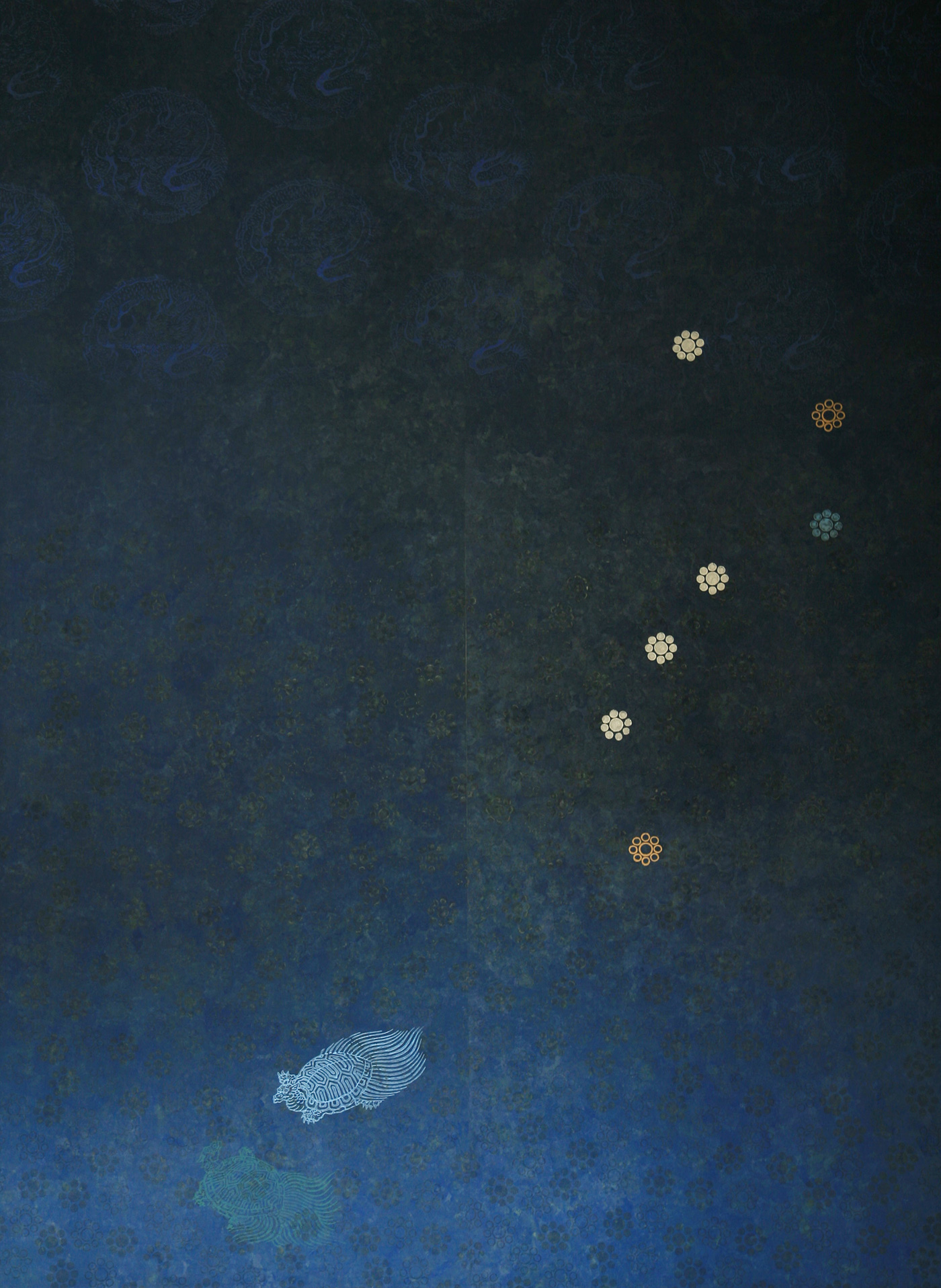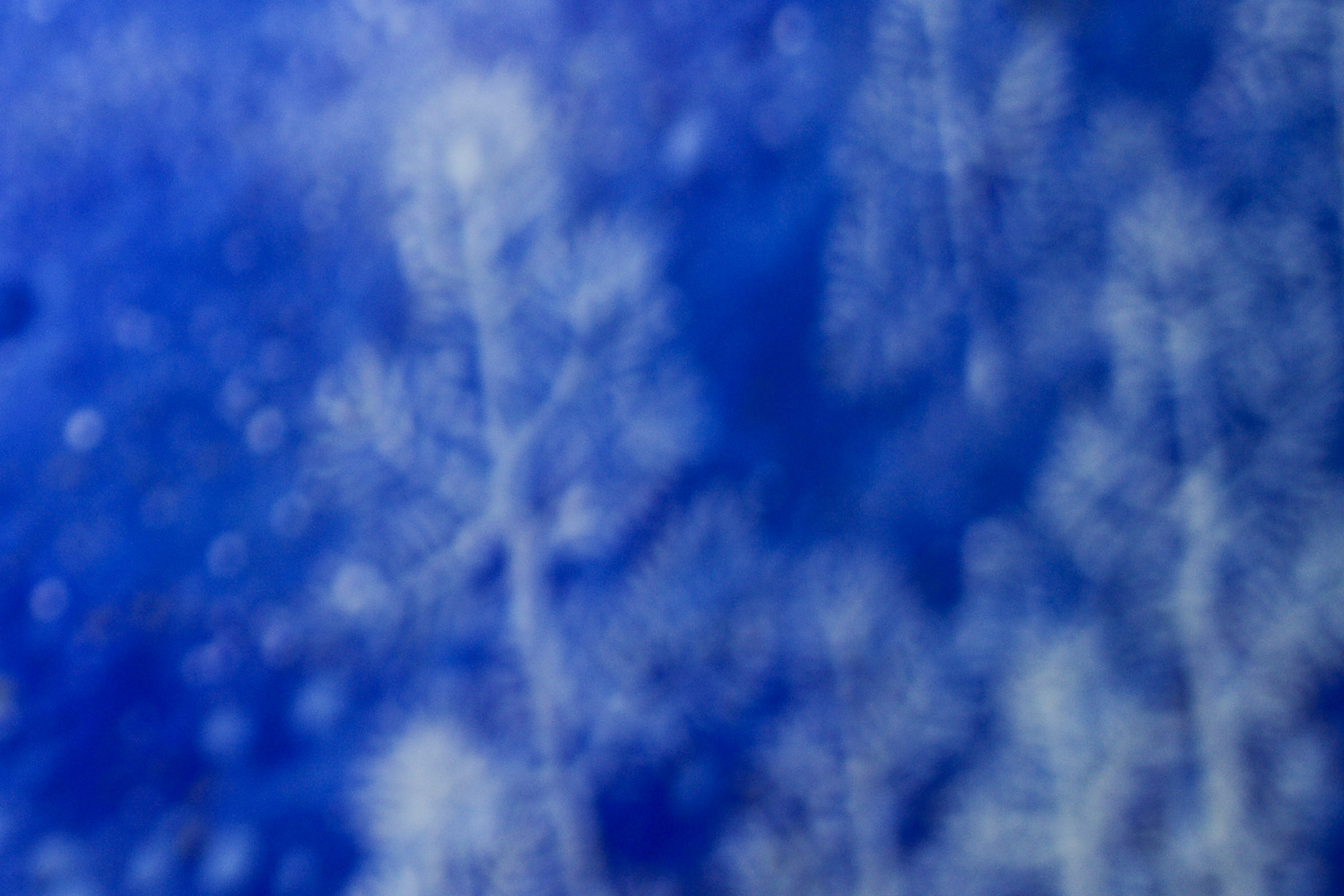Offering Dedicated to Yogen-in Temple,
The Artwork “Hoshi ni Negai o (Wish Upon a Star)”

Tsutsui Tadahito of the Agency for Cultural Affairs,
the person who gave Toto Akihiko’s original finger coloring technique of “shifukuzuri printing” its name
From the first time I saw “Hoshi ni Negai o,” I felt that I needed to verbalize what I felt, but I honestly struggled to find the right words. As I pondered why I could not find the words, I came to a simple conclusion. When you encounter something truly amazing, you are lost for words. It often happens when we approach those indescribably fascinating works of artists such as Sotatsu and Korin. They contain things that cannot be put into words; indeed, things that would be lost if they were put into words: The unique musical rhythm of the Rimpa school; The feeling one gets when looking at a subsection of the work, as if some piece were loose; The tension that runs through the entire work of art—these are things that are difficult to comprehend except through the senses. This may be contrasted with the approach of Western painting, which focuses on technical excellence and depicts a conceptual, reproductive, semantic, and emotive world that can be better understood by translating it into words. In the East, lacking the words to talk about a work of art can be the mark of a good piece.
In the case of Sotatsu, his identity as a painter was the starting point, and he used his brush to move freely between two dimensions to capture the appearance of things. However, Sotatsu restrained himself from capturing the subject matter with his paintbrush in any degree of freedom and complexity. Instead, he made bold simplifications, eliminated redundancy, and elevated the subject to a mold, creating an image that could almost be called a pattern or decoration. This allows the artist to acquire the rhythmic space of the pattern and the dignified elimination of waste, while at the same time maintaining the freedom of the paintbrush without falling into the trap of fitting the mold and becoming stale. The superb technique and the tension created by moving back and forth between the two is what makes Sotatsu so appealing.
In Toto’s case, on the other hand, the starting point is the charm of the karakami mold. The artist freely manipulates two dimensions by boldly changing the pattern in the middle of the image like a one-layered kimono, or by extracting the pattern and positioning it as he sees fit, as he has done with the Big Dipper, while also adding depth to the pattern itself by subtly changing each color. In carrying out such constructive work, I truly felt that he reached the horizon of painting and was manifesting an intertextual world.
Although the starting points are different, Toto and Sotatsu have, in some sense, reached the same point, which is probably why they both leave their viewers speechless.
I felt that “Hoshi ni Negai o” carried a truly contemporary meaning that was well-suited to being housed in this location after 400 years.
(2010)


